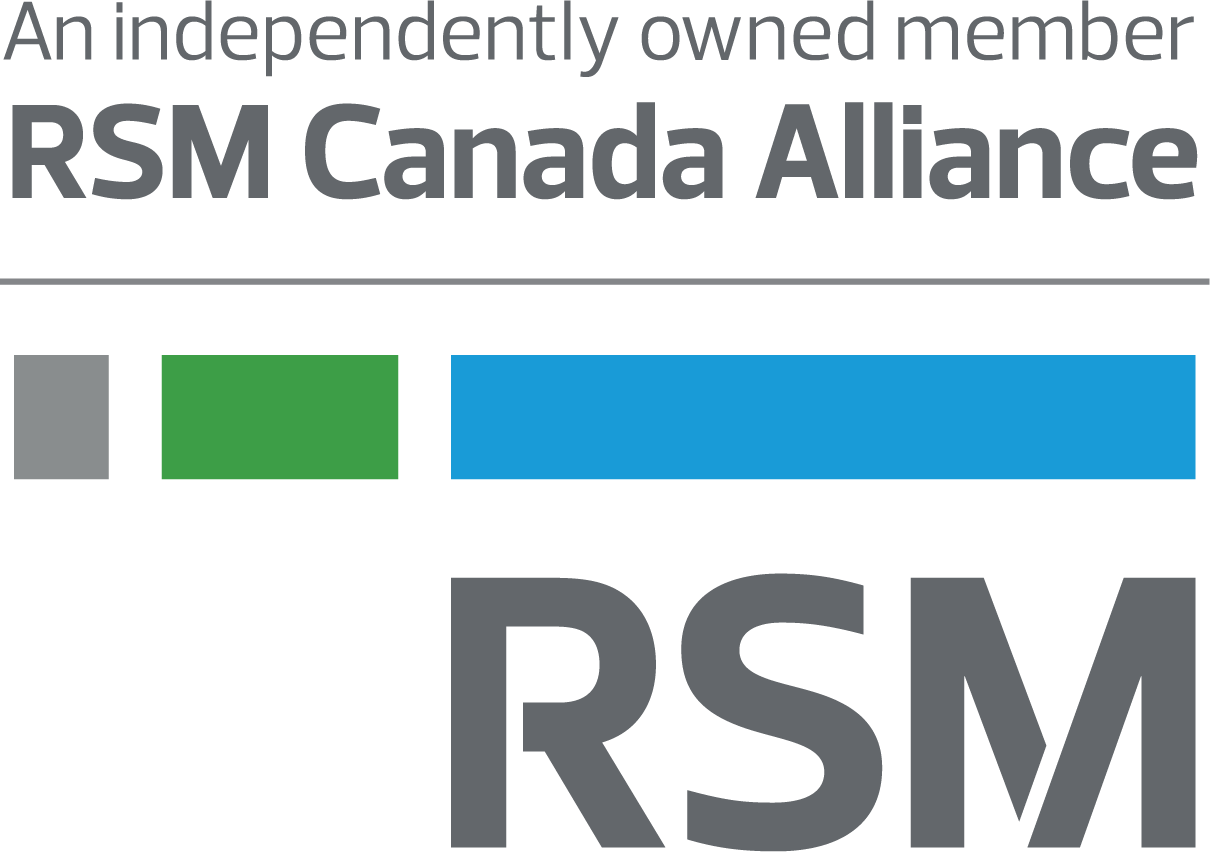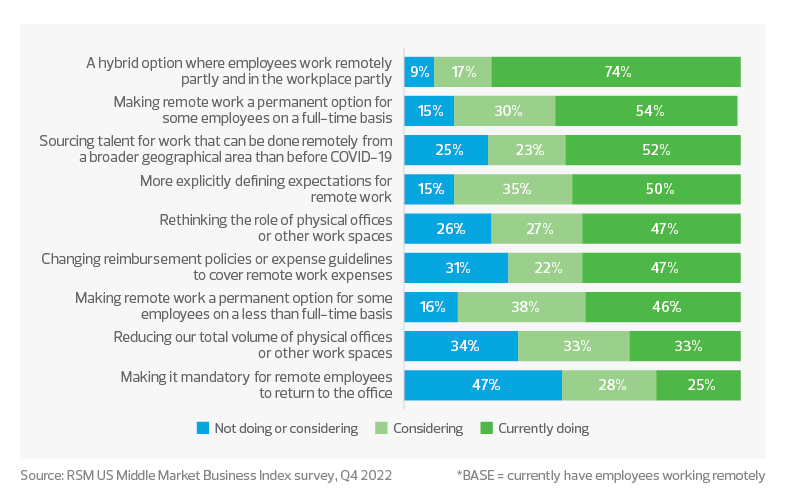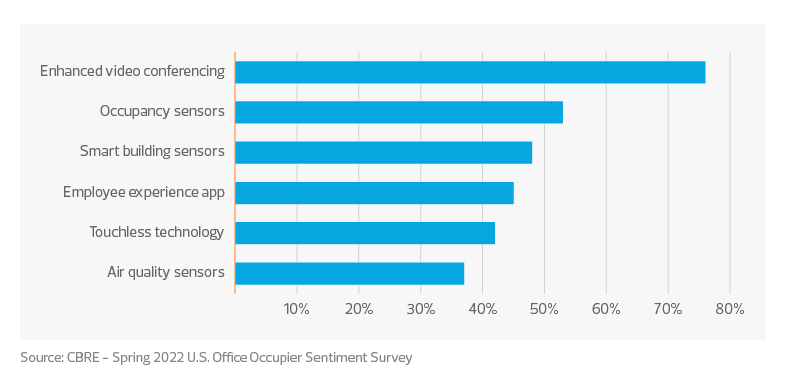Executive summary
The COVID-19 pandemic has led to a significant increase in remote work. This article discusses the key tax considerations and pitfalls of implementing a hybrid-work model in order to adapt to an evolving global workforce.
The COVID-19 pandemic has led to a significant increase in remote work. According to StatsCan research, 90% of workers who began telecommuting due to the pandemic reported being at least as productive as they were in office , while gaining flexibility and better work-life balance. As we enter the post-pandemic work era, it is unsurprising that employers are experiencing pushback when trying to bring workers back to the office, and many are choosing to embrace the post-pandemic new hybrid-work model by setting organizational remote work policies.
The possibility of working for an employer abroad, or in another province or territory has never been as available as now, and employers are able to access a much larger, more diverse talent pool. StatsCan estimates that between 2016 and 2022, the number of Canadian employees working at home from another province or territory has increased more than fivefold. Of all industries, information and cultural industries, administrative services, and professional services have seen the highest increase in workers working from home from another province or territory, with finance & insurance and wholesale trade following closely behind.
Discussed below are the potential corporate and individual income tax considerations employers should be mindful of when considering the adoption of an organizational remote work policy.
Home office and provincial permanent establishment (PE)
The concept of provincial permanent establishment (PE) is relevant for Canadian income purposes of allocating taxable income between provinces. Remote work has significantly increased the level of complexity in determining whether a PE has been created as a result of having an employee working in a different province or country.
Under Reg. section 400(2) of the ITA, a PE is:
1. A place of business, whether owned or rented, so long as the enterprise has the legal right to use the place of business;
2. The place of business must have a degree of permanence and
3. The business must be carried on wholly or partly through the fixed place of business.
Whether a corporation has created a PE in a particular province is ultimately a question of fact. In CRA Views Interpretation 2010-0378421I7, the CRA examined whether an employee’s home office can give rise to a PE, and how the consideration differs where an employer rents office space from which the employee works. A home office will generally not result in a PE. However, where an employer rents an office space from which an employee works, a PE will likely result if the day-to-day business activities of the corporation are carried on there.
Where a PE exists in another jurisdiction, the corporation must determine the income tax liabilities with respect to that jurisdiction. This may cause added administrative burden as corporations must track and allocate profits and wages amongst jurisdictions.
Canadian Payroll Considerations
Under Reg 102, an employer is required to deduct withholdings when it pays employment income, based on “where he reports for work at an establishment of the employer in a province, in Canada…”. However, employees pay individual income tax based on their province of residence at the end of the taxation year. If the employee reports to the employer’s establishment in person, the employee’s province or territory of employment for the purpose of payroll withholding is where the employer’s establishment is located. If the employee does not have to report to an employer’s establishment in person (for example, the employment contract states the employee works from a home exclusively), the employee’s province or territory of employment for the purpose of payroll withholding is where the employee’s salary and wages are paid. This will normally be the location of the employer’s payroll department or payroll records.
Some Canadian provinces have Employer Health Tax (EHT) such as Ontario, BC and Manitoba, whereas Alberta and Saskatchewan do not. Consideration should be given to the definition of PE under each of the relevant provincial governing legislations, as they can differ from Federal regulations and from province to province, thus possibly subjecting an employer to provincial EHT beyond the scope of Reg 400 of the ITA.
Salaries and wages can also be eligible for tax credits under federal and provincial research and development (R&D) incentive programs. Canadian provincial R&D programs that supplement the federal scientific research & experimental development (SR&ED) incentives have rates ranging from 3.5% in Ontario to 10% in B.C. and 30% in Quebec. Many provinces offer refundable credits where the qualifying corporation is a Canadian-controlled private corporation (CCPC). The provinces generally require that the claimant is carrying on eligible work in the province and that they have a PE in the province. If a company maintains a remote workforce outside the province in which they have a PE and where the R&D credit is being claimed, the R&D work performed outside that province may become ineligible for purposes of the provincial credit.
Inbound taxation: Foreign employers hiring Canadian resident employees
The concept of PE is also relevant to non-resident employers operating in Canada. However, the concept of PE in the international tax context is not only governed by Canadian domestic tax law, but also by relevant tax treaties. While non-resident corporations may be subject to tax in Canada if they carry on business in Canada, most of Canada’s tax treaties require the higher-threshold presence of a PE in Canada to be satisfied before a non-resident is subject to Canadian tax. For non-resident corporations hiring Canadian resident employees, a recent RSM Tax Alert discusses the key tax considerations in depth. It is important to note if an employee is a Canadian resident, Canadian payroll obligations and Canadian personal tax liabilities will apply, regardless of whether treaty relief is available to the employer, or PE implications to the employer.
Outbound taxation: Canadian company hiring employees in a foreign country
Canadian employers should assess the foreign country’s tax rules for hiring remote workers in that foreign country, and any potential non-tax concerns, such as immigration, business/commercial laws and regulations, and local employment laws. Foreign countries may not have the same tax requirements on corporate profits as in Canada, and the concept of having a PE in a foreign country may be viewed differently than in Canada. In some cases, there may not be a tax treaty in effect and corporate income tax may apply based on meeting the foreign country’s domestic “carrying on business” tax rules.
For Canadian tax purposes, no amount shall be deducted or withheld from a payment to an employee who was neither employed nor resident in Canada at the time of the payment except in respect of a remuneration reasonably attributable to the duties of any office or employment performed or to be performed in Canada by the non-resident person. On that basis, if a Canadian resident employer hires a US-resident employee who works exclusively from their home in the US, Canadian income tax withholdings should not apply. The Canadian employer will still be required to issue a T4 slip and the wages paid may potentially be subject to US payroll withholding obligations.
Non-resident employees providing employment services in Canada are subject to the same withholding, remitting and reporting obligations as Canadian resident employees. Employers must withhold CPP and EI premiums on a non-resident employee’s remuneration in a similar fashion as they would for a resident employee. An exemption of CPP may be available based on a reciprocal social security agreement between Canada and the employee’s home country. These agreements make sure only one plan covers an employee—the Canada Pension Plan or a foreign social security plan. An exemption for EI may also be available if the unemployment insurance laws of the employee’s home country require premiums to be paid on the same employment income.
Adapting to evolving work models
The pandemic has changed our lives in many aspects, and the reality of the new hybrid work model is here to stay. From a tax perspective, the new reality of shifting to remote business has many aspects that need to be considered. As the workforce evolves, policy changes and legislative updates are to be expected. We encourage practitioners and business owners to be proactive in their research and assess the potential impact of any business decisions before their implementation.
This article was written by Lingzi Layman and originally appeared on Aug 01, 2022 RSM Canada, and is available online at https://rsmcanada.com/insights/tax-alerts/2022/post-pandemic-new-hybrid-work-era-and-related-tax-considerations.html.
The information contained herein is general in nature and based on authorities that are subject to change. RSM Canada guarantees neither the accuracy nor completeness of any information and is not responsible for any errors or omissions, or for results obtained by others as a result of reliance upon such information. RSM Canada assumes no obligation to inform the reader of any changes in tax laws or other factors that could affect information contained herein. This publication does not, and is not intended to, provide legal, tax or accounting advice, and readers should consult their tax advisors concerning the application of tax laws to their particular situations. This analysis is not tax advice and is not intended or written to be used, and cannot be used, for purposes of avoiding tax penalties that may be imposed on any taxpayer.
RSM Canada Alliance provides its members with access to resources of RSM Canada Operations ULC, RSM Canada LLP and certain of their affiliates (“RSM Canada”). RSM Canada Alliance member firms are separate and independent businesses and legal entities that are responsible for their own acts and omissions, and each are separate and independent from RSM Canada. RSM Canada LLP is the Canadian member firm of RSM International, a global network of independent audit, tax and consulting firms. Members of RSM Canada Alliance have access to RSM International resources through RSM Canada but are not member firms of RSM International. Visit rsmcanada.com/aboutus for more information regarding RSM Canada and RSM International. The RSM trademark is used under license by RSM Canada. RSM Canada Alliance products and services are proprietary to RSM Canada.
 |
DJB is a proud member of RSM Canada Alliance, a premier affiliation of independent accounting and consulting firms across North America. RSM Canada Alliance provides our firm with access to resources of RSM, the leading provider of audit, tax and consulting services focused on the middle market. RSM Canada LLP is a licensed CPA firm and the Canadian member of RSM International, a global network of independent audit, tax and consulting firms with more than 43,000 people in over 120 countries.
Our membership in RSM Canada Alliance has elevated our capabilities in the marketplace, helping to differentiate our firm from the competition while allowing us to maintain our independence and entrepreneurial culture. We have access to a valuable peer network of like-sized firms as well as a broad range of tools, expertise, and technical resources.
For more information on how DJB can assist you, please contact us.
|











